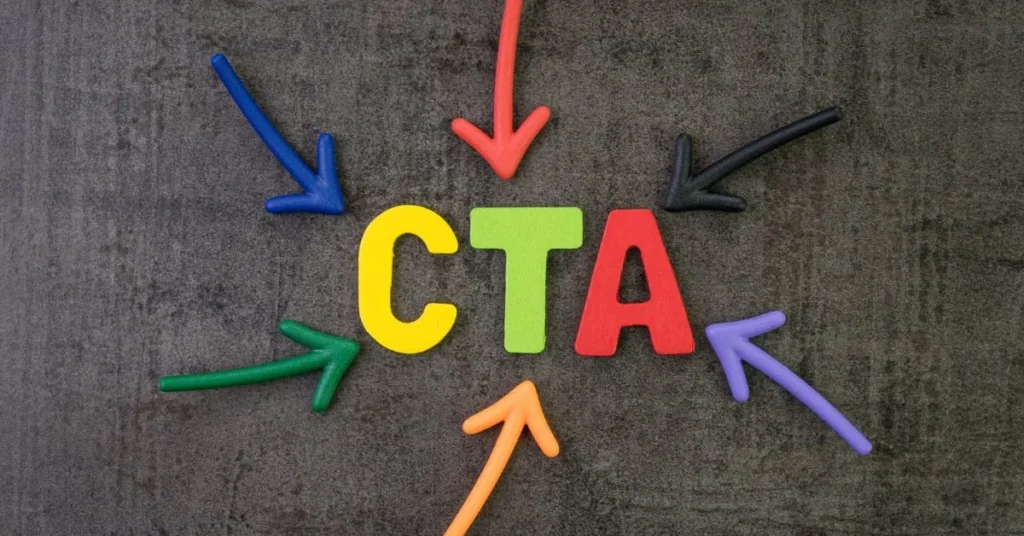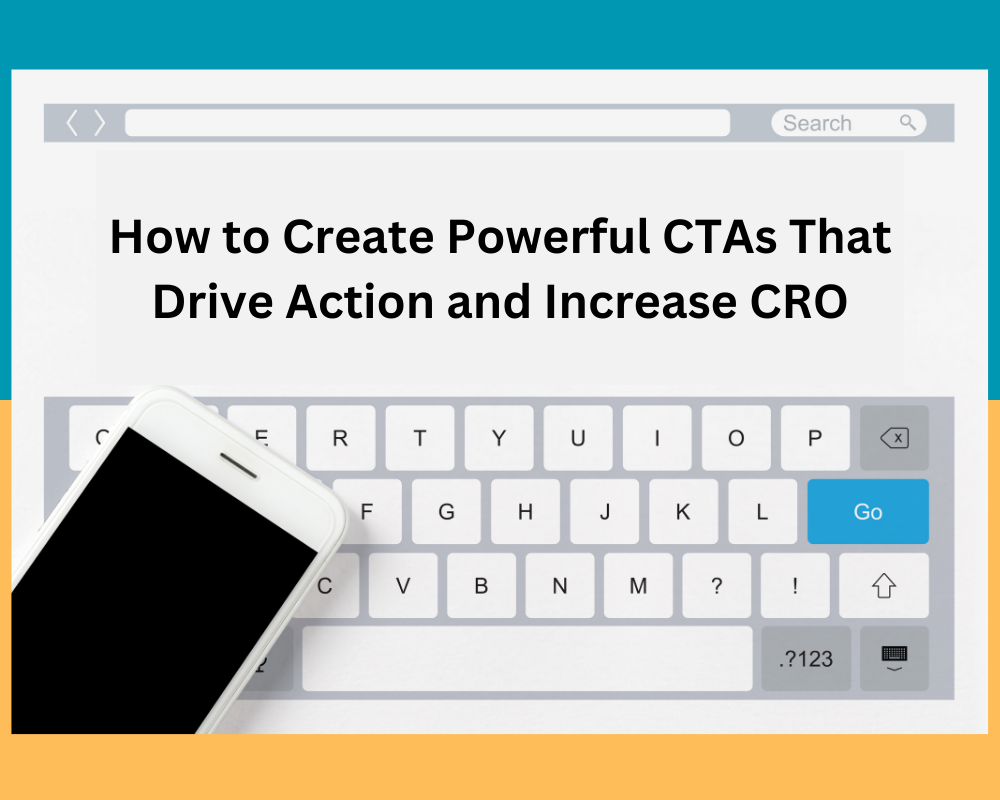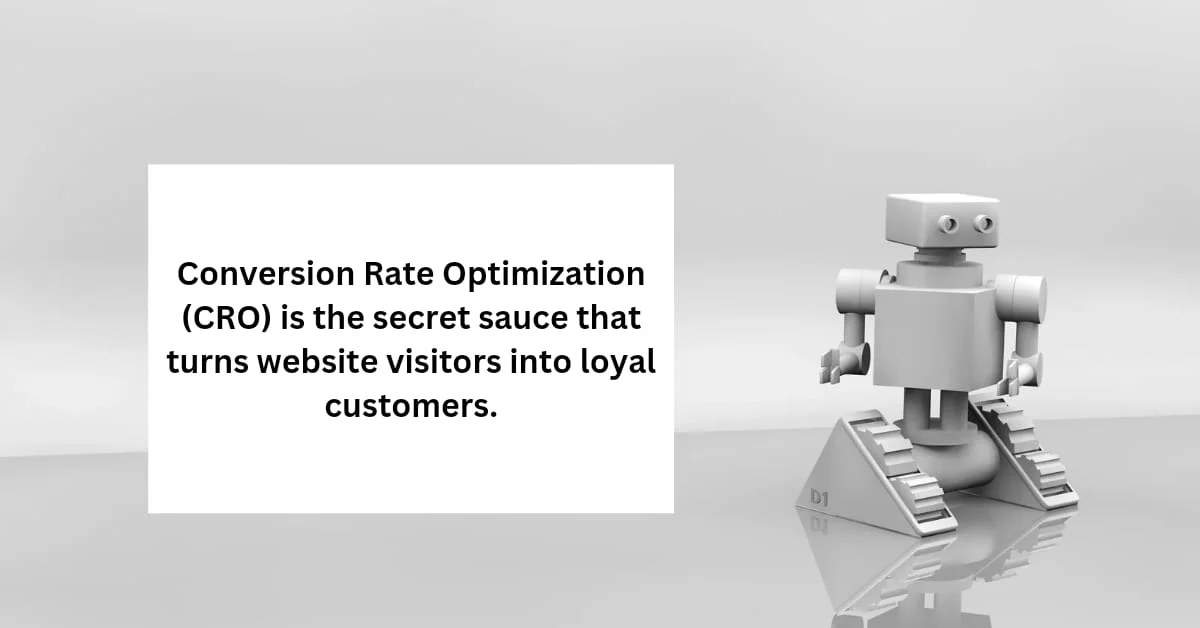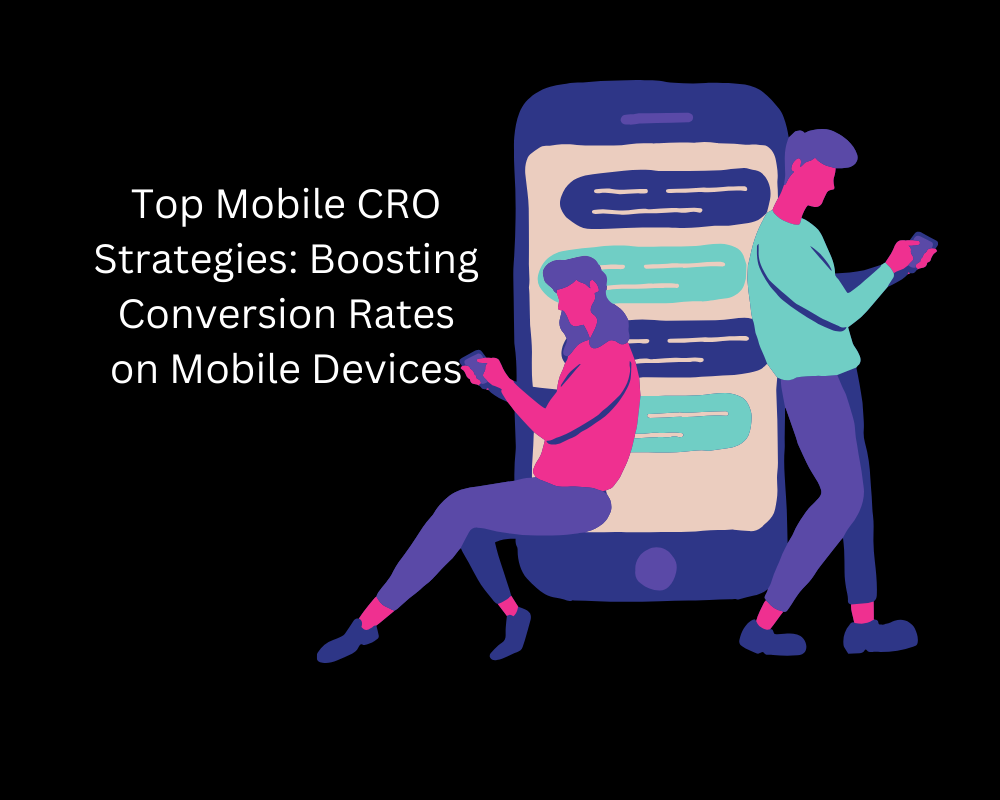A Call to Action (CTA) is more than just a button or a hyperlink; it’s a pivotal point that guides users toward a desired action, be it subscribing to a newsletter, downloading a resource, or making a purchase. Despite its simplicity, the effectiveness of a CTA can make or break a campaign’s success, directly influencing conversion rates and, ultimately, the bottom line.
Understanding how to create powerful CTAs in Conversion Rate Optimization (CRO) is crucial for any business looking to maximize its online performance. A well-crafted CTA does more than ask the user to take action—it compels them, promising value and solving a specific problem or need. The right combination of words, design, and placement can turn a hesitant visitor into a committed customer.
In this blog, we’ll explore the techniques that make CTAs not just functional but transformative. We’ll delve into the psychology behind effective CTAs, the elements that make them stand out, and real-world examples that showcase their potential to drive action and boost conversions. Whether you’re crafting CTAs for a new campaign or optimizing existing ones, these insights will equip you with the strategies needed to create powerful CTAs that truly convert.
Understanding Your Audience
Creating a powerful CTA starts with a deep understanding of your audience. Without this foundation, even the most well-crafted CTA might fall flat. Your audience is not a monolith; it’s a diverse group with varying needs, preferences, and pain points. To create CTAs that resonate and drive action, you must first get into the minds of your target audience.
Identifying Target Audience

The first step in tailoring your CTAs is to identify who you’re speaking to. This involves segmenting your audience based on demographics, behavior, and psychographics. Demographics give you the basics—age, gender, income level, and education. Behavior tells you how they interact with your brand—what products they view, what content they engage with, and their purchasing habits. Psychographics delve deeper into their values, interests, and lifestyle.
Understanding these elements helps you craft CTAs that speak directly to the unique characteristics of each segment. For example, a CTA urging a discount might work well for a cost-conscious audience but might not be as effective for those who prioritize quality over price.
Tailoring CTAs to Audience Segments
Once you’ve identified your audience segments, the next step is to tailor your CTAs to meet the specific needs and desires of each group. Consider the following approaches:
- Pain Point Addressing: Craft CTAs that directly address the specific challenges or needs of each segment. For example, “End Your Search for the Perfect Mattress” could be a compelling CTA for a segment looking for comfort and durability.
- Benefit Highlighting: Emphasize the benefits that matter most to each segment. A CTA like “Get Fit with Personalized Workouts” might resonate more with a health-conscious audience than a generic “Join Now.”
- Urgency Creation: Different segments respond differently to urgency. For some, a CTA like “Limited Time Offer” might trigger immediate action, while others might prefer a CTA that promises long-term benefits, such as “Start Your Journey to Better Health Today.”
By tailoring your CTAs to resonate with the specific needs, desires, and pain points of your audience segments, you significantly increase the likelihood of conversion. This personalized approach not only enhances user experience but also drives more meaningful interactions with your brand.
Key Elements of an Effective CTA
Creating a CTA that converts requires more than just a catchy phrase or a brightly colored button. It’s about combining several key elements that, when executed well, can compel users to take the desired action. Let’s break down the core components that make a CTA truly effective.

Clarity and Conciseness
The first rule of a successful CTA is clarity. Your message should be straightforward, leaving no room for confusion. Users need to understand exactly what will happen when they click on the CTA. For example, instead of saying “Click Here,” which is vague, use “Download Your Free Guide” or “Start Your Free Trial Today.” These CTAs clearly state what the user can expect, increasing the likelihood of conversion.
Conciseness goes hand in hand with clarity. A CTA should get to the point quickly. Lengthy CTAs can dilute the message and reduce their impact. Aim to keep your CTAs between two to five words while maintaining a clear message. Phrases like “Join Free Now” or “Shop Bestsellers” are short, direct, and effective.
Action-Oriented Language
CTAs are meant to provoke action, and the language you use plays a critical role in this. Action-oriented words like “Discover,” “Start,” “Join,” “Save,” and “Get” create a sense of urgency and direct the user towards the next step. For instance, “Discover Your Perfect Plan” is more compelling than “Learn About Our Plans.”
The key is to make the action as enticing and immediate as possible. The right verbs can inspire users to take action on the spot, reducing the chance they’ll leave the page without converting. Additionally, using first-person language like “Get My Free Ebook” can create a personal connection, making the action feel more relevant and tailored to the individual.
Value Proposition
A CTA is more persuasive when it offers a clear value proposition. Users are more likely to click if they know what’s in it for them. This could be a discount, exclusive content, or a trial offer—whatever adds value to their experience.
For example, instead of a generic “Sign Up,” consider a more value-driven CTA like “Sign Up & Get 20% Off Your First Order.” This not only tells users what action to take but also gives them a compelling reason to do so. The perceived value of the offer can significantly influence the user’s decision-making process.
In essence, a strong CTA effectively combines clarity, concise language, action-oriented wording, and a compelling value proposition to guide users smoothly down the conversion funnel. Each element should work together to create a seamless and persuasive experience that resonates with your audience and drives action.
Designing Visually Appealing CTAs
While the wording of your CTA is crucial, the visual design can be just as important in grabbing attention and encouraging clicks. A visually appealing CTA draws the eye and prompts action, making it a key factor in its effectiveness. Here’s how you can design CTAs that stand out and convert.

Color Psychology
Colors have a powerful psychological impact on how users perceive and interact with your CTA. The right color can evoke specific emotions and prompt certain behaviors. For instance, red is often associated with urgency and can create a sense of excitement, making it a popular choice for CTAs that encourage quick action, like “Buy Now.” On the other hand, green is linked to safety and is often used in CTAs that relate to progressing or confirming an action, like “Continue” or “Start Now.”
However, the most important aspect of color choice is contrast. Your CTA should stand out against the background and other elements on the page. High-contrast colors draw the eye, making the CTA more noticeable. For example, if your website has a predominantly blue color scheme, using a bold orange or yellow for your CTA can make it pop.
Placement and Size
Where you place your CTA on the page can significantly impact its visibility and effectiveness. CTAs should be placed where they naturally align with the user’s flow through your content. Common placement strategies include:
- Above the Fold: Placing CTAs in the upper part of your webpage ensures they are visible without the user having to scroll, increasing the chances of engagement.
- End of Content: Placing CTAs at the end of an article or blog post can capture users who are ready to take the next step after consuming the content.
- Within Content: Embedding CTAs within the content itself can catch users’ attention as they read through the page, especially if it relates directly to the topic at hand.
In terms of size, your CTA should be large enough to stand out but not so large that it overwhelms the rest of your content. A good rule of thumb is to ensure the CTA button is big enough to be easily clickable on both desktop and mobile devices.
Use of Visuals and Icons
Incorporating visuals or icons into your CTA can enhance its appeal and make it more engaging. Simple elements like an arrow pointing towards the button or an icon related to the CTA’s action (e.g., a shopping cart for “Add to Cart”) can make the CTA more intuitive and guide the user’s eye to it.
Visuals can also reinforce the message of the CTA. For example, using an image of a happy customer next to a CTA like “Join Thousands of Satisfied Clients” can provide social proof and boost credibility, encouraging users to take action.
The combination of thoughtful color choices, strategic placement, appropriate sizing, and the inclusion of relevant visuals ensures your CTA not only catches the user’s attention but also encourages them to take the desired action.
Testing and Optimizing CTAs
Even with a well-designed and thoughtfully crafted CTA, there’s always room for improvement. Testing and optimizing your CTAs is crucial to ensure they perform at their best and drive maximum conversions. This process involves regularly evaluating and tweaking your CTAs based on data-driven insights.

A/B Testing
A/B testing, also known as split testing, is one of the most effective methods for optimizing CTAs. This involves creating two or more variations of a CTA and testing them against each other to see which one performs better. Variations can differ in aspects such as wording, color, size, or placement.
For example, you might test “Get Your Free Guide” against “Download Your Free Guide Now” to see which phrase drives more clicks. Similarly, you could experiment with different button colors or positions on the page. The key is to change only one element at a time to accurately attribute any difference in performance to that specific change.
When conducting A/B tests, it’s important to run them long enough to collect a significant amount of data. This ensures that the results are statistically reliable and not due to random chance.
Analyzing CRO Success Stories
Learning from real-world examples can provide valuable insights into what works and what doesn’t when it comes to CTA optimization. For instance, a well-documented case study might show how a company increased its conversion rate by changing the wording of its CTA from passive language like “Learn More” to a more action-oriented phrase like “Get Started Today.”
These case studies often highlight specific strategies that have proven successful across various industries. By analyzing these examples, you can apply similar techniques to your own CTAs, adapting them to fit your brand and audience.
Iterative Improvements
CTA optimization is not a one-time task; it’s an ongoing process. After implementing changes based on A/B testing or insights from case studies, it’s important to continue monitoring performance. Regularly review analytics to see how your CTAs are performing over time and be prepared to make adjustments as needed.
For example, if you notice a drop in click-through rates, it might be time to test a new variation or re-evaluate the current CTA’s placement. By continually refining your CTAs, you can ensure they remain effective and aligned with your audience’s evolving preferences and behaviors.
This iterative approach allows you to fine-tune your CTAs for maximum impact, ensuring that they consistently drive conversions and contribute to your overall CRO efforts.
Real-World CTA Case Studies
To truly understand the impact of well-crafted CTAs, it’s helpful to look at real-world examples where strategic optimization led to significant improvements in conversion rates. These case studies not only demonstrate the effectiveness of various techniques but also provide actionable insights that can be applied to your own CTAs.

CRO Case Studies Overview
- Unbounce: The Power of Urgency: Unbounce, a well-known landing page builder, conducted a series of A/B tests to optimize their CTAs. One of their most successful experiments involved adding urgency to their CTA. By changing “Start Your Free Trial” to “Start Your Free Trial Now,” they were able to increase their click-through rate by 14%. This case highlights the importance of incorporating urgency into your CTAs to encourage immediate action.
- Crazy Egg: Clarity Over Cleverness: Crazy Egg, a heat mapping tool, decided to test whether a clever CTA could outperform a clear one. They compared “Try it Out” against “Show Me My Heatmap” and found that the more straightforward CTA outperformed the clever one by 20%. This case study underscores the value of clarity in CTAs, showing that users prefer to know exactly what they’re getting.
- Basecamp: Personalization and Specificity: Basecamp, a project management tool, experimented with personalizing their CTA. They replaced “Sign Up” with “Start Your Free 30-Day Trial” and saw a 15% increase in conversions. This change provided users with specific information about what they were signing up for, making the CTA more compelling. It also illustrates how specificity and personalization can enhance the effectiveness of a CTA.
Key Takeaways
These case studies provide several key lessons for optimizing your CTAs:
- Urgency: Adding a sense of urgency to your CTA can drive immediate action, making users feel they need to act now rather than later.
- Clarity: While creativity has its place, when it comes to CTAs, clarity often trumps cleverness. Users want to know exactly what they’re signing up for or what they’ll receive.
- Specificity: Being specific about the benefits or offers tied to your CTA can make it more persuasive. Details like the length of a free trial or the type of content users will receive can tip the scales in your favor.
By studying these examples and applying the lessons learned, you can refine your own CTAs to better align with user expectations and behavior, ultimately leading to higher conversion rates.
In a Nutshell
Crafting powerful CTAs is both an art and a science, requiring a blend of clear communication, compelling design, and strategic testing. As we’ve explored, the effectiveness of a CTA lies in its ability to resonate with the audience, provide clear value, and drive immediate action. From understanding your audience’s unique needs to applying action-oriented language, every element of your CTA should work towards making the next step in the user journey as seamless and enticing as possible.
In summary, a successful CTA is:
- Clear and Concise: It tells users exactly what they can expect when they click.
- Action-Oriented: It uses strong, commanding language that encourages immediate action.
- Visually Appealing: It stands out on the page through thoughtful design choices, including color, size, and placement.
- Continuously Optimized: It’s regularly tested and refined based on performance data to ensure it remains effective.
The real-world examples provided demonstrate that even small tweaks to a CTA can lead to significant improvements in conversion rates. Whether you’re adding a sense of urgency, simplifying the language, or being more specific about the offer, these adjustments can make a substantial difference in how users interact with your CTAs.Final Thoughts
The digital landscape is constantly evolving, and so too are the strategies for optimizing CTAs. Continuous experimentation and learning are key to staying ahead. Don’t be afraid to test new ideas, analyze the results, and iterate your approach. By doing so, you’ll not only improve your CTAs but also enhance the overall user experience, leading to better engagement and higher conversion rates.













